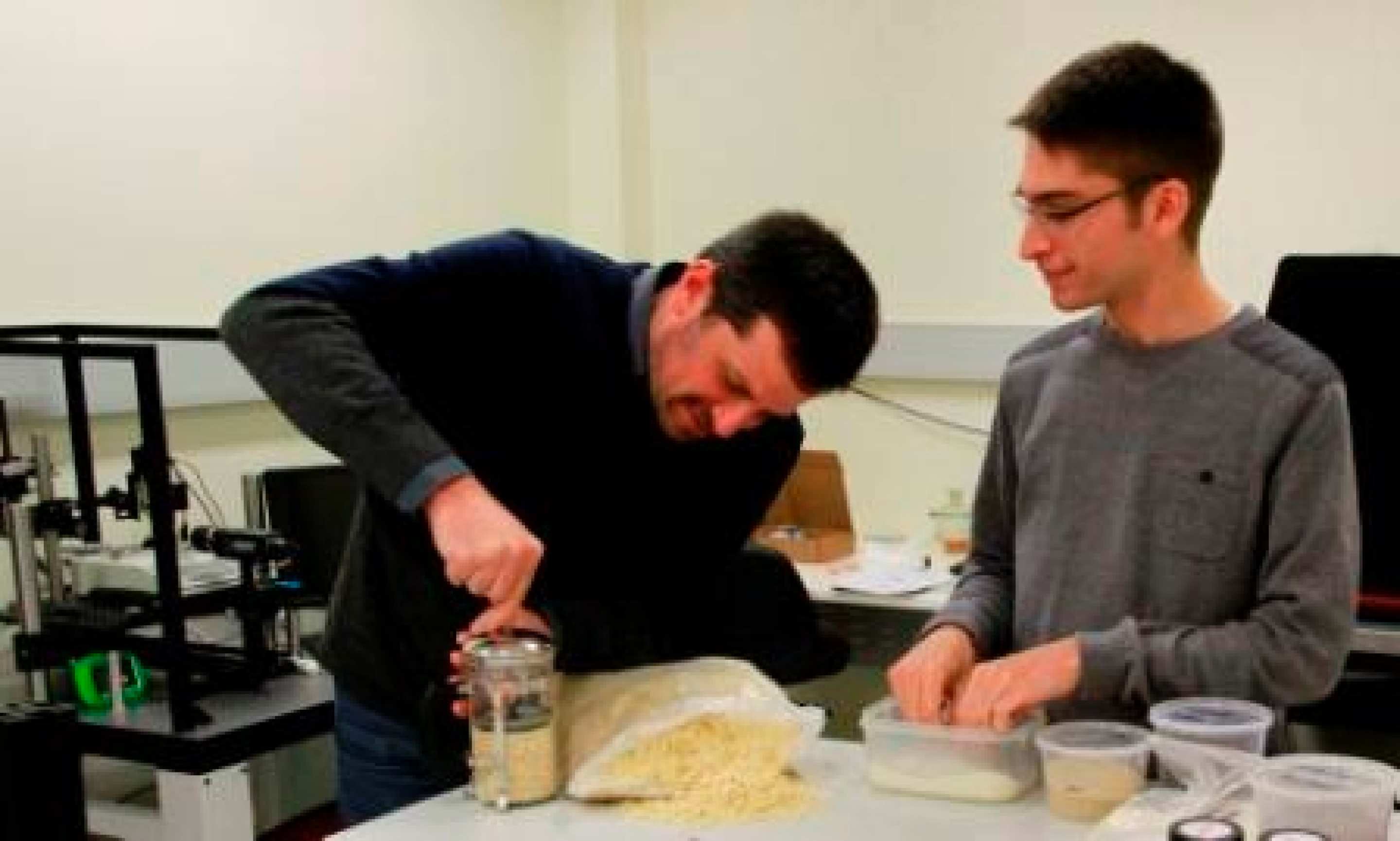Proof is in the breakfast cereal
The science of snap, crackle and pop has expanded beyond the breakfast bowl with an international research team using puffed rice cereal to explain the movement and crushing of porous materials when compressed.


Professor Itai Einav and Dr Francois Guillard work in the Particles and Grains Laboratory
The science of snap, crackle and pop has expanded beyond the breakfast bowl with an international research team using puffed rice cereal to explain the movement and crushing of porous materials when compressed.
Results of the work conducted by researchers from the universities of Sydney and San Diego State have been published today in the journal Nature Physics.
The Nature paper presents the team’s creative research approach to revealing the patterns of motions in brittle porous materials and their results will have an impact on our understanding of everything from snowballs colliding during avalanches to crater patterns formed during meteorite impacts.
Professor Itai Einav, lead author from the University of Sydney’s Particles and Grains Laboratory whose long-term research objectives have been focussed on understanding how grains behave under varying conditions says:
“Before we started we knew that brittle porous materials such as rocks, foams or even snow exhibit irreversible compaction patterns.
We see such patterns in Sydney’s sandstone all around us, but this geological imprint doesn’t tell us much about the internal motions and the process of pores collapsing within the rock mass. We know rocks move, but it takes millions of years.
“What we didn’t know is in what ways it moves and deforms, and specifically what types of internal patterns develop.
“We picked puffed rice because they are highly porous and compliant and typify generic brittle porous materials when being compressed.”
“We wanted to understand how packs of brittle grains coordinate motion when crushed. Many of us have tried this at home as kids – crushing puffed rice cereal with a spoon.
“For us this simple experiment revealed surprisingly rich compaction patterns that were due to the competing processes of internal collapse and recovery,” said Professor Einav.
The paper’s co-lead author Dr François Guillard also from the University of Sydney, who worked with Professor Julio Valdes at San Diego State University on the experiments, says the research model replicating the experiments offers a new perspective on jerky flows in metallic alloys.
“We used a robust spring-lattice model to capture the process of internal collapse and recovery and are now able explain the dynamics of previously and newly observed patterns.
“The lattice model we have created can address other brittle porous media such as natural rocks, bones and snow, and manmade ceramics, foams and pharmaceutical powders,” says Dr Guillard.
Professor Einav is internationally recognised for producing scientifically driven engineering methods, such as new experimental facilities for determining material strength and mathematical formulae that have impacted geotechnical practice and bulk handling of powders and grains.
Media contact: Victoria Hollick, T 9351 2579, M 0401 711 361 E victoria.hollick@sydney.edu.au
Related articles
Discover the future at Innovation Week
For a week this October, we’ll be bringing together some of our brightest minds with industry and community partners to collaborate on how research and innovation can help us overcome some of the greatest health challenges facing our planet.

Long distance links inspire innovation
Working with Professor Yasuyuki Todo (Waseda University) and Dr Hiroyasu Inoue (Hyogo University), Dr Petr Matous from the University of Sydney’s Faculty of Engineering and IT found that supply chains can work as important channels for the flow of information, innovation, and productivity between individual firms.
University of Sydney joins Sydney Science Festival
Our researchers are involved in a range of public events to celebrate National Science Week from 11 to 21 August.
Social brain refreshed
While we connect with hundreds – even thousands – of others via social media, our brain’s ability to build and maintain long-term stable relationships remains as limited as that of our hunter-gatherer ancestors.
Study explains elastin's remarkable movements
New research likens the flexibility of elastin in a blood vessel to the dynamics of a ballet.
